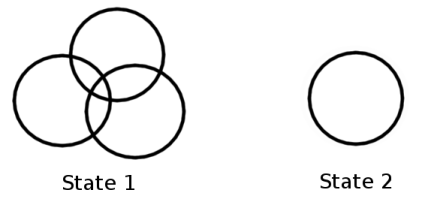Short Description:
A
contextual, conceptual and practical exploration of the design process
in which the audience (co-)generates/(co-)produces the artwork.
A Bit Longer Description:
I Create, they consume. So old fashioned! After all, this is a time of participating, sharing, connecting.... So why not create artworks together with your audience, involve them in the design process itself? Ever thought about what that could bring about for both the designer and the audience? To put you as a designer in an open and experimental mindset we will first, theoretically, explore a wide range of design processes/methods and pay attention to the role that unpredictability can play in these design practices. In the course of that debate-styled presentation we will focus more and more on the audience generated design process and eventually invite every participant to conceptualize and execute an audience (co-)generated/(co-)produced artwork by using the other participants of the workshop as the audience.
Cyrille Bloemers (1978, The Netherlands) has a Master of Arts degree in Art and Culture Studies and works as a lecturer and researcher at the Utrecht School of the Arts' Faculty of Art, Media & Technology. File under: Subversion, (Experimental) Film, Lowbrow, Installation Art, Creative Design Practices, Theory, Concept, Video Art, Music Video, Sampling, (Applied) Narrative Design, Activism....
Johan Rijpma (1984, The Netherlands) obtained his Master of Arts degree at the Utrecht School of the Arts (Faculty of Art, Media & Technology). His films, animations, music video's and other artworks are often the result of his fascination by and exploration of the creative design process and the element of unpredictability. www.johanrijpma.nl
http://www.hku.nl/web/English/UtrechtSchoolOfTheArts/Faculties/FacultyOfArtMediaTechnology/AboutTheFacultyOfArt,MediaTechnology.htm


Timeline
Day 1:
9.00-9.30
-Introduction: welcome,
who is who and expectations, timeline
9.30-11.00
-Theoretical context
(with short break halfway)
11.00-12.00
-Handing out the assignment, talking it through and first short brainstorm
12.00-13.00
-Lunchbreak
13.00-15.45
-Working on the concept
(of course with some short breaks in between)
15.45-16.00
-Wrapping up day 1 and
making a schedule for day 2
Day 2:
9.00 – 14.00
-Execution of the
concepts (with breaks)
14.00 – 15.30
-Evaluation of the
projects and fine-tuning for the TAF (with break halfway)
15.30 – 16.00
-Making appointments for
Friday and evaluation and closing of the workshop
User/Audience (Co-)Generated/(Co-)Produced Art:
...covers a wide range of artworks from different fields and disciplines in which the audience/visitor/user plays in one way or another an active part in the design process of the artwork.
In general the artist shapes a framework and decides on the contribution that is asked from the visitor. The artist does not exactly know what and the amount a visitor is going to contribute; content and esthetics are thus unknown variables (paraphrased from: http://tetem.nl/content/bestanden/persbericht-user-generated-art.pdf).


Example: SwarmSketch
Peter Edmunds
www.swarmsketch.com

"SwarmSketch is an ongoing online canvas that explores the possibilities of distributed design by the masses. Each week it randomly chooses a popular search term which becomes the sketch subject for the week. In this way, the collective is sketching what the collective thought was important each week. A new sketch begins after one week, or after the previous sketch reaches one thousand lines, whichever comes first. Each user can contribute a small amount of line per visit, then they are given the opportunity to vote on the opacity of lines submitted by other users. By voting, users moderate the input of other users, judging the quality of each line. The darkness of each line is the average of all its previous votes" (source: swarmsketch.com).

Example: OneFrameOfFame
OneFrameOfFame
User generated art differs from interactive art in the sense that in the latter the audience/user/visitor gives input after the artwork is produced: The visitor 'activites' the artwork while with user generated art the visitor (co-)creates the artwork (paraphrased from: http://tetem.nl/content/bestanden/persbericht-user-generated-art.pdf).


EXAMPLE?: Telegarden
Ken Goldberg
http://www.medienkunstnetz.de/works/telegarden/video/1/

EXAMPLE?: Pocket Full Of Memories
George Legrady


UNPREDICTABILITY
Three points of interest:
-The Element of Unpredictability in Art/Design

-Goal:
Reflection on and challenging and broadening of your design process-paradigm
-Research:
Exploring unpredictability in the design process.
-Questions:
How can you invite unpredictability in your design process and what's in it for you (and your audience)?
-Method:
Exploring different approaches and design methods and eventually focus on the audience generated design method of collecting and connecting.
-Parameters for analysis:
Control - Unpredictability
Starting Point/Motivation - Result
-Note:
In practice different approaches more often than not overlap.










